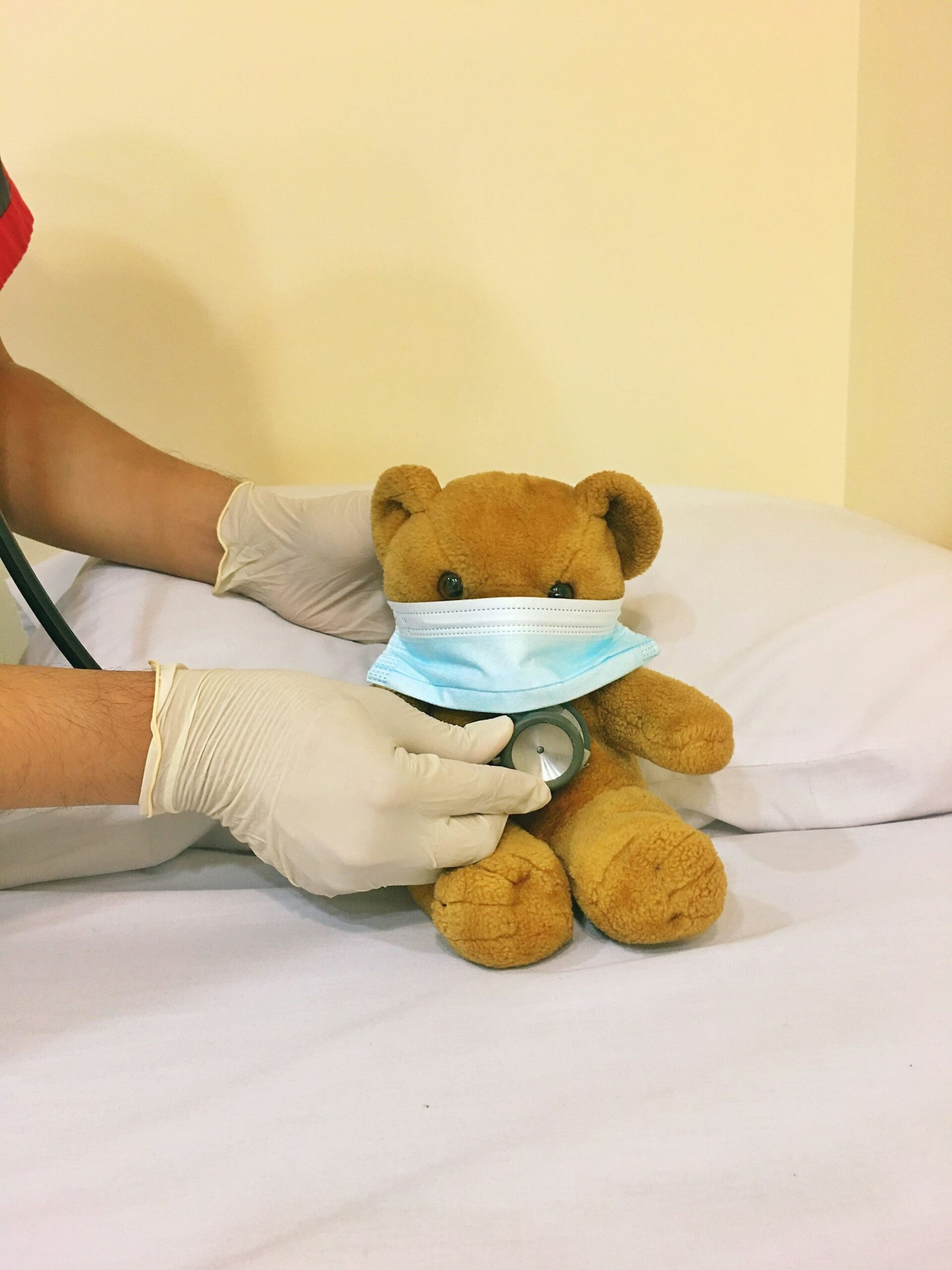Recognizing the sudden worry that seizes parents when a child spikes a high fever or develops an unexplained rash is an experience as universal as it is unsettling. Scarlet fever—a term that might conjure up images from history—remains a very real and present concern in school-aged children today. Balancing reassurance with practical medical advice, parents navigate a maze of information between school outbreaks, emerging antibiotic resistance, and urgent care visits. What triggers scarlet fever? How do you spot it before it escalates? Is it dangerous, and if so, how do you protect siblings and others at home? Addressing these questions with empathy and precision, this resource offers insight into recognizing, managing, and preventing scarlet fever while providing clear explanations of essential physiological and medical concepts, always tailored to a parent’s pressing needs.
Understanding scarlet fever and why it matters
Scarlet fever surfaces as a contagious bacterial infection driven by group A Streptococcus—a microscopic adversary, also the culprit behind classic strep throat. The age range most susceptible? Children between 5 and 15, and most frequently those aged 5 to 10. But why focus on scarlet fever, a condition many may have assumed faded into the background of modern medicine? Left unchecked, scarlet fever’s fierce inflammation can set off a cascade of complications—think: heart, kidneys, joints, even neurological involvement. Rapid diagnosis and antibiotics, especially penicillin or amoxicillin, have changed its course dramatically. But vigilance is still warranted: prompt intervention not only speeds recovery, it blocks the bacteria’s path within families and classrooms.
Distinctive features include a sudden harsh sore throat, fever that might soar above 38.5°C (101.3°F), and the classic sandpaper-textured rash—a tactile symptom that stands out amidst the feverish blur of other childhood illnesses. Swollen neck glands, headache, the oddly memorable “strawberry tongue”—first white-coated, then fiery red and textured—form a diagnostic triad. Not every child gets the ‘storybook’ version of the illness, particularly infants and toddlers, but knowing what to look for makes all the difference.
Causes, contagion, and how scarlet fever spreads
Behind scarlet fever’s swift arrival in homes and schools lies the formidable Streptococcus pyogenes, a bacterium wielding toxic proteins known as pyrogenic exotoxins. These exotoxins ignite a dramatic body-wide immune response, culminating in rash and fever. Transmission occurs primarily via respiratory droplets—a single cough, an innocent sneeze, or even laughter in close quarters suffices. Direct contact with infected skin, shared towels, or handled toys extends the threat well beyond coughs and kisses.
Periods of high contagion—typically 10 to 21 days—can be slashed to a mere 2 days when antibiotics are started. That’s a game changer for families. Crowded spaces, worn immune systems, and skin injuries raise the odds. A toddler playdate or a cramped classroom can shift from harmless gathering to hotbed of outbreaks in the blink of an eye. At home, prevention relies on basics: frequent, thorough handwashing, separate drinking cups, and vigilant cleaning of high-touch surfaces. Shared routines can become shields against further infections.
Scarlet fever symptoms: what to expect
Within just 1 to 3 days after exposure, scarlet fever often announces itself with a high fever, complaints of a sore, red throat, and perhaps headaches or chills. The neck’s lymph nodes swell, often tender to touch—sometimes the first thing a parent notices while consoling a fussy child. Vomiting or tummy aches may also feature, especially early on. But it’s the rash—emerging 12 to 48 hours after the fever starts—that can clinch the suspicion: fine pink or red bumps with a rough, sandpaper-like texture, often beginning in skin folds (elbows, underarms, groin), then fanning out across the torso, face, and limbs—sparing the palms and soles. Cheeks flush, a pale ring appears around the mouth (circumoral pallor), and red lines, known as Pastia’s lines, deepen within the folds.
The “strawberry tongue” is more than just a nickname: its white coating peels to reveal angry red bumps—a clue diagnosticians watch for. Older children show these features most clearly. In babies, however, the clinical picture softens; the rash may be faint, or replaced by irritability and poor sleep. Adults, too, can contract scarlet fever but tend toward milder cases—sometimes enough to evade recognition until complications arise.
As the body heals, a peculiar aftermath can occur: skin on fingers and toes often peels, sometimes dramatically, in the weeks after rash subsides.
Diagnosis: clinical and laboratory confirmation
Diagnosis starts with what can be seen and touched: the harsh sandpaper rash, fever, strawberry tongue, and enlarged lymph nodes. Pediatricians will almost always perform a rapid antigen detection test (RADT) or a throat swab culture to swiftly pinpoint the presence of group A Streptococcus. If the rapid test is inconclusive, the more sensitive laboratory throat culture remains the gold standard—a necessary step when immediate answers guide urgent care.
Scarlet fever’s symptoms can mirror other illnesses—Kawasaki disease, viral exanthems, or allergic drug reactions—yet these rarely bring together the throat, rash, and strawberry tongue triad. Antibiotics become the decider: viral illnesses won’t budge, scarlet fever improves rapidly.
Urgent symptoms: when immediate care is needed
Certain clinical signs should send parent alarms ringing:
- Temperatures soaring past 40°C (104°F)
- Convulsions
- Persistent drooling, refusal to swallow, or an inability to open the mouth
- Intense headaches or unusual confusion
These could signal severe infections or dangerous complications. Don’t hesitate—medical teams are equipped to respond quickly.
The physiological cascade: what happens inside the body
Once Group A Streptococcus takes hold, it clings tightly to the throat or skin, deploying special proteins (such as M protein) that render it invisible to immune defenses. Pyrogenic exotoxins sweep through the body, prompting a fever and distinctive redness. For most, the immune response contains the threat. But delay in treatment opens the door to wider bacterial invasion—potentially spreading to ears, sinuses, lungs, or deep tissues. More insidious are “post-streptococcal” complications: rheumatic fever (where immune cells target joints, heart, or central nervous system) and glomerulonephritis (kidney inflammation with blood or protein in urine).
Early antibiotics halt this chain of events, dramatically reducing long-term damage.
Effective treatments: from antibiotics to home support
A complete 10-day antibiotic prescription is at the heart of treating scarlet fever: penicillin and amoxicillin remain the most effective first-line choices, with macrolides (such as azithromycin) as alternatives for children allergic to penicillin. Single-dose injectable forms—benzathine penicillin G—offer an option if swallowing tablets or liquid proves impossible.
Strict adherence to the regimen is non-negotiable. Stopping medicine too soon can allow bacteria to linger and rebound, raising the specter of complications and sustaining contagiousness. Generally, a child is safe to return to school or daycare 24 to 48 hours after starting therapy—once the fever has resolved and they feel well.
Supportive care makes the course easier: rest, gentle hydration (nothing acidic that will sting sore throats), soft foods, cool snacks (even ice cream has its moment here), and pain relief with acetaminophen. Avoid aspirin and most non-steroidal anti-inflammatory drugs in children due to risk of rare but serious side effects. Calamine lotions or antihistamines can help with rash-induced itchiness—a small mercy during recovery.
Keep a watchful eye: if symptoms worsen or there’s little improvement after two days on antibiotics, or if new, severe symptoms crop up, prompt follow-up with your healthcare provider is wise.
Complications: what parents should monitor
Despite its often dramatic start, scarlet fever is not without risks. Acute complexities might include peritonsillar or retropharyngeal abscesses—deep, painful throat infections requiring intervention—or ear infections, sinusitis, and more rarely, pneumonia or even invasive bloodstream infections (sepsis). Long-term, untreated cases may set off inflammatory diseases like rheumatic fever (joint pain, heart valve issues) or post-streptococcal glomerulonephritis (kidney troubles, often marked by dark or tea-colored urine).
Timely antibiotics serve as the most effective shield. Awareness keeps these rare outcomes from catching families by surprise.
Preventing scarlet fever: practical family strategies
While a scarlet fever vaccine remains out of sight for now, hygiene and environmental controls build a strong line of defense:
- Prioritize thorough hand-washing with soap, especially after coughing, sneezing, or blowing noses
- Instruct children on effective nose cleaning and discourage nose picking
- Avoid sharing utensils, towels, or toothbrushes
- Regularly air out rooms; maintain home temperatures around 18-20°C (64-68°F)
- Disinfect common surfaces and toys frequently, especially in periods of increased community transmission
- Swift start of antibiotics for confirmed cases, paired with keeping children at home for at least 24 hours, sharply curtails contagion
- Antibiotic stewardship is key: use only when medically indicated to slow community-wide resistance
Schools and childcare settings should be especially vigilant during outbreaks, notifying families and reinforcing hygiene routines.
Special considerations: infancy, adulthood, and pregnancy
Scarlet fever in those under three years old remains uncommon, partly thanks to maternal antibodies—nature’s early security. However, should an infant display even mild, nonspecific signs (fussiness, feeding difficulty, inconspicuous rash), cautious and thorough evaluation by a medical professional is warranted. Adults usually have either mild or atypical courses; the exception lies with those who are immunocompromised or have chronic health conditions, where symptoms may escalate.
For pregnant women, current evidence offers reassurance: scarlet fever does not harm the unborn child, and penicillin-family antibiotics are considered safe options. Nevertheless, it’s wise to minimize exposure and consult a healthcare provider promptly if any contact with the infection is suspected.
Recent trends: outbreaks and antibiotic resistance
Several regions, including England and parts of East Asia, have reported recent surges in scarlet fever due to more aggressive bacterial strains—sometimes showing growing resistance to macrolide antibiotics. The COVID-19 pandemic’s hygiene push briefly suppressed transmission, yet cases have risen as social distancing has waned. Active public health vigilance, accurate case identification, and prudent antibiotic use help contain these waves.
Supporting recovery at home
A child recovering from scarlet fever needs rest, gentle encouragement, and steady hydration. Familiar routines—favorite soft foods, quiet activities, reassuring touch—ease discomfort and foster healing. Creating a calm, responsive environment, while monitoring for red-flag symptoms, empowers parents to guide recovery with confidence.
Medication refusal or resistance can try anyone’s patience. Adopting creative routines, using positive reinforcement, and turning medicine time into a brief opportunity for connection can transform what might have been a battleground into shared triumph.
Health professionals: collaborative care
Pediatricians, family doctors, nurses, and pharmacists unite around families facing scarlet fever. Each plays a distinct yet interconnected role—diagnosis, delivering timely treatment, providing education, and monitoring for complication. Ongoing support and open dialogue encourage adherence to medical advice and reinforce good habits that protect entire households.
Myths and lingering misconceptions
Despite waning public attention, scarlet fever has never truly vanished. There is no available vaccine. A mild case still requires thorough antibiotic treatment, and symptoms may escape notice in children with darker skin tones. Asymptomatic carriers can transmit the bacteria—meaning that community vigilance remains essential. Accurate, timely information gives parents the tools to act swiftly, protecting both their children and the larger community.
Key takeaways
- Scarlet fever, though readily treated, remains a significant childhood infectious illness, especially in school-aged children.
- Catching early warning signs such as sore throat, high fever, and a distinctive rash leads to prompt care and better outcomes.
- Completing a full 10-day antibiotic course is non-negotiable for eradication, complication prevention, and limiting spread.
- Hand hygiene, environmental cleaning, and minimizing shared personal items are powerful allies in prevention.
- Medical professionals are skilled partners, ready to assist and advise through diagnosis, treatment, and post-recovery follow-up.
- For personalized advice and free children’s health questionnaires, parents can download the Heloa app—a valuable resource at every stage of recovery and prevention.
Scarlet fever need not be a source of overwhelming anxiety. Armed with the right information and support, parents are well positioned to protect their children’s health, mitigate risk to others, and foster a safe, confident recovery.
Questions Parents Ask
Can adults get scarlet fever, and if so, are symptoms different from those in children?
Yes, adults can indeed develop scarlet fever, though it’s more common in children. When adults are affected, symptoms may sometimes be milder or atypical, which can make it harder to recognize. Adults might experience a sore throat and fever, but the typical rash and “strawberry tongue” may not always be as pronounced. Rassurez-vous, with appropriate treatment, recovery is usually swift. If you or another adult in the household develops unusual symptoms after exposure to someone with scarlet fever, consulting a healthcare provider remains a wise choice.
How long is a child with scarlet fever contagious, and when can they return to school or daycare?
A child with scarlet fever is contagious from the start of symptoms and remains so until at least 24 hours after beginning appropriate antibiotic treatment. Most children can safely return to school or daycare after they have completed a full day of antibiotics—provided they feel well and have no fever. This period helps ensure the risk of transmission to others is minimized, offering peace of mind for families and communities.
Can you get scarlet fever more than once?
It is possible to have scarlet fever more than once. Although a previous infection may provide some degree of immunity to certain strains, different types of group A Streptococcus bacteria can cause repeat infections. So, if your child develops symptoms again after a previous bout of scarlet fever, don’t hesitate to seek advice. Early management continues to be essential to reduce the risk of complications and promote a smooth recovery.
Further reading:









